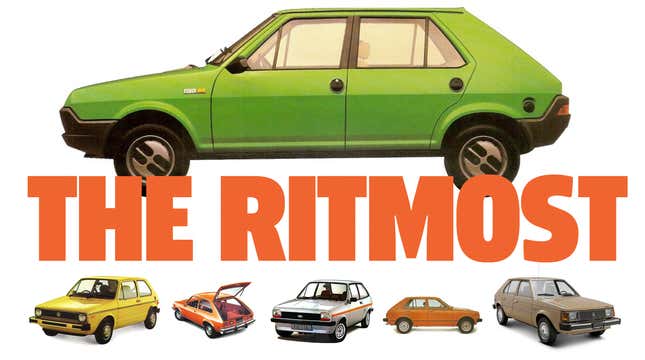
The mid-to-late 1970's, and into the 1980's, were the glory days of cheap, boxy hatchbacks from all over the world. While hatchbacks had existed before, you could argue that Volkswagen’s Giugiaro-designed Golf (Rabbit for us fried-donutburger consumers) really set the design template for this era, spawning many very similar-looking little useful cars. After giving the matter much careful thought, I have come to the conclusion that the best-looking member of this class of car is the Fiat Ritmo.
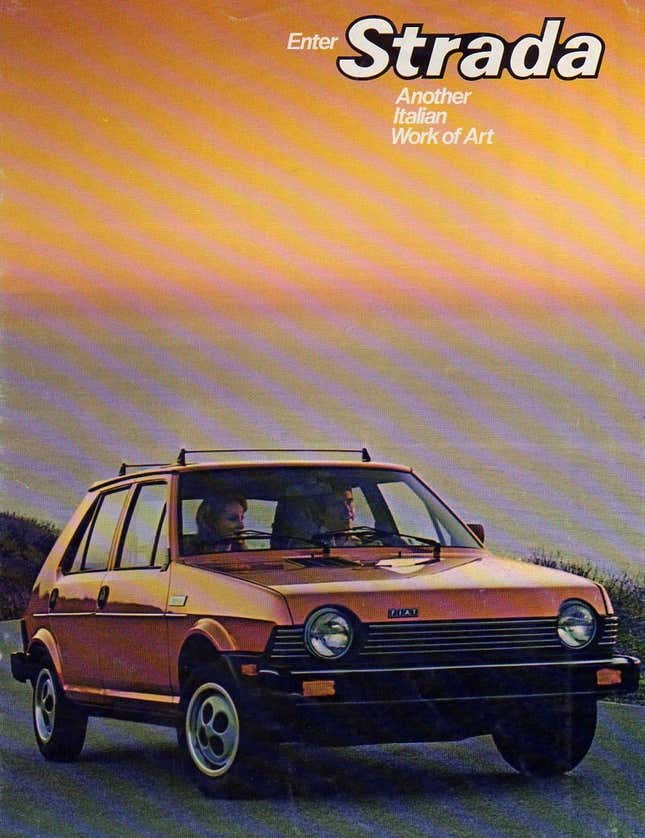
We had the Ritmo here in America briefly, but it was called the Strada, because I guess an Italian word that meant “rhythm” didn’t test as well as an Italian word that meant “street?” I guess “street” at least gives a hint as to where to use the product?
The fundamental design of the Ritmo/Strada was really quite similar to the Golf, or the Dodge Omni/Plymouth/Simca Horizon, or the Ford Fiesta, or the Chevy Chevette, or, really, almost any of the small econoboxes of the era.

While I appreciate the look of many of these hardworking little cars, the Ritmo manages to push the style just a little bit further, making something that’s both very similar yet also stands out.
The Ritmo wins primarily because of its details. In cars like these, where the fundamental shape is so dictated by function, and as a result varies so little from one carmaker to another, the way that fundamental two-box shape is detailed becomes even more important.
The Ritmo was bold in its details, but they all contributed to one overall design theme: a clean, geometric, and aggressively modern look, bold and avant-garde, avoiding the cluttered or fussy look of its competitiors.
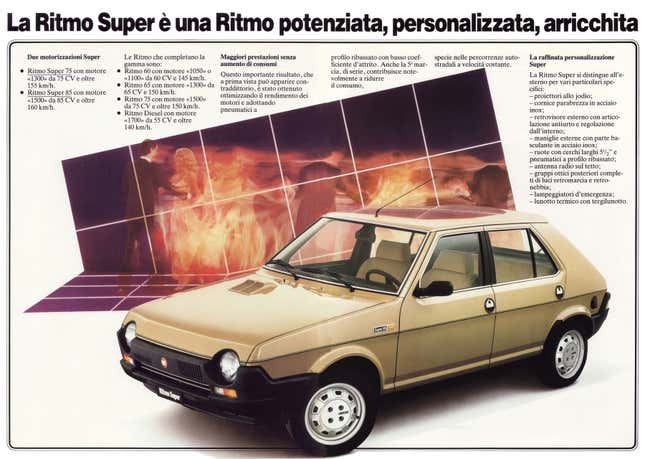
The Golf and Fiesta, both German (the Fiesta was from Ford of Germany) embraced flat black grilles and bumper trim, and generally kept things clean and functional-looking, and while I think both are very successful designs, they didn’t quite reach the level of an overall design theme like the Ritmo.
The Americans tended to over-adorn their cars, with too much chrome and trim and grille patterns and hubcaps that were too fussy, too much slapped-on ornamentation. The Omni/Horizon looked like a Golf wearing too much cheap jewelry.
Japanese cars, like the Toyota Starlet or the Mazda GLC, were good designs but hedged the rectilinearity instead of embracing it, which I think dulled their overall impact.

Designed by Sergio Sartorelli, the man behind, among other things, some fascinating Volkswagen Beetle design updates that never happened and the striking razor-edge VW Type 3 Karmann-Ghia that did, the original Ritmo is a bold and fascinating bit of automotive design.
It’s one of the relatively few successful production cars to really embrace asymmetry, as you can see in the offset hood intake vent and, more notably, the grille and front fascia. The grille air intake slat design is entirely functional, with intakes only where they actually need to be—a welcome departure from current auto design trends that revel in fake grille bits.
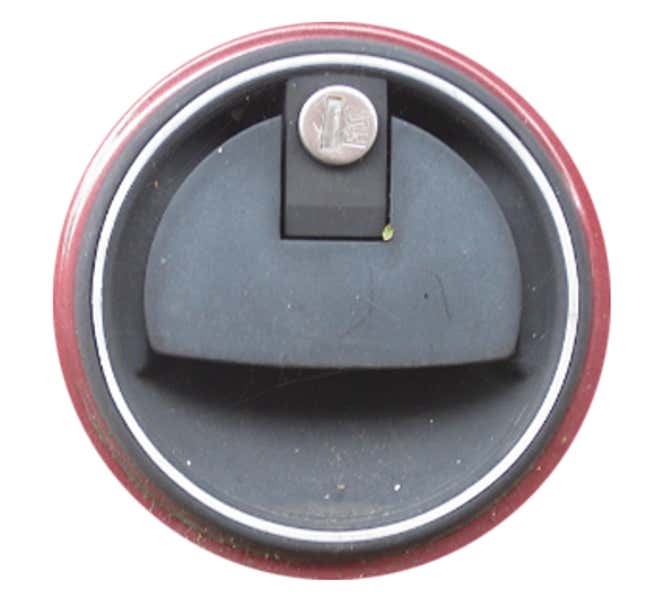
The car is all about primary shapes, mostly linear, but with pure circles incorporated skillfully into the design. The headlights are unashamedly round, like the Golf and others, but what pushes the Ritmo further is the repetition of pure round elements in other parts of the car, those amazing round door handles.
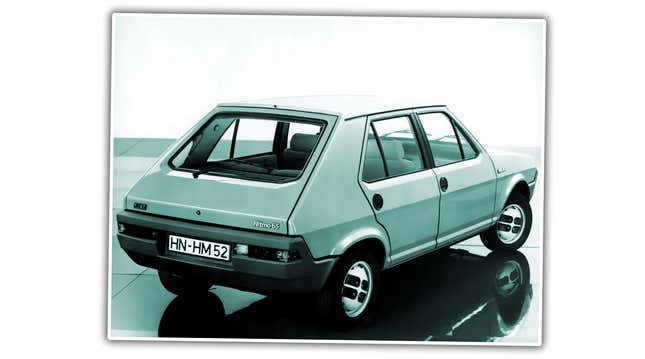
The bumper design is crucial as well. Fiat decided to go with a black plastic bumper for the Ritmo, but significantly the bumper wasn’t an afterthought tacked onto the car’s body like everyone else, but was completely integrated into the design. In front, it formed the grille and the lower half of the headlamp surround, and out back the bumper surrounded the taillights and license plate, forming the entire body of the car below the hatch.
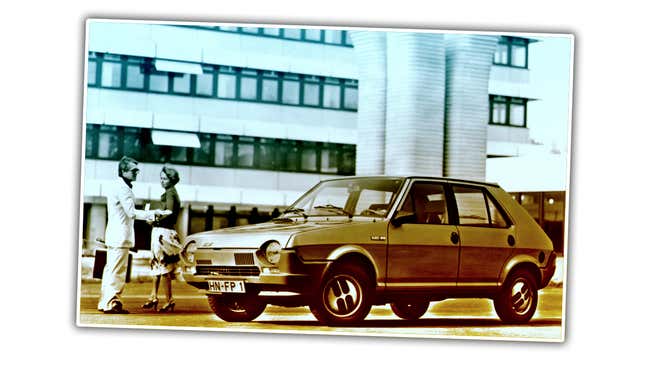
Also, those wheels. Look at those amazing wheels.
Where the other cars in this category all look like parts added to a base form, the Ritmo feels like a unified whole. It uses is materials honestly and cleverly, and the whole effect is like some piece of geometric abstract art, maybe like an automotive version of a Frank Stella piece:
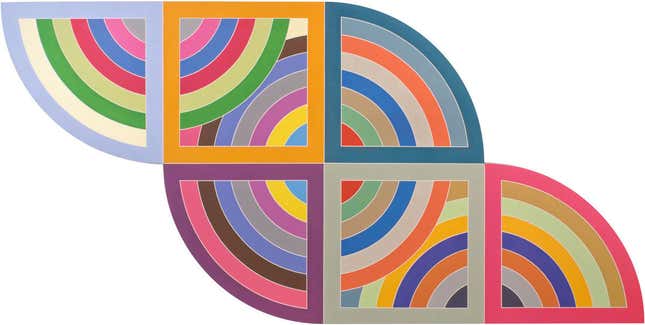
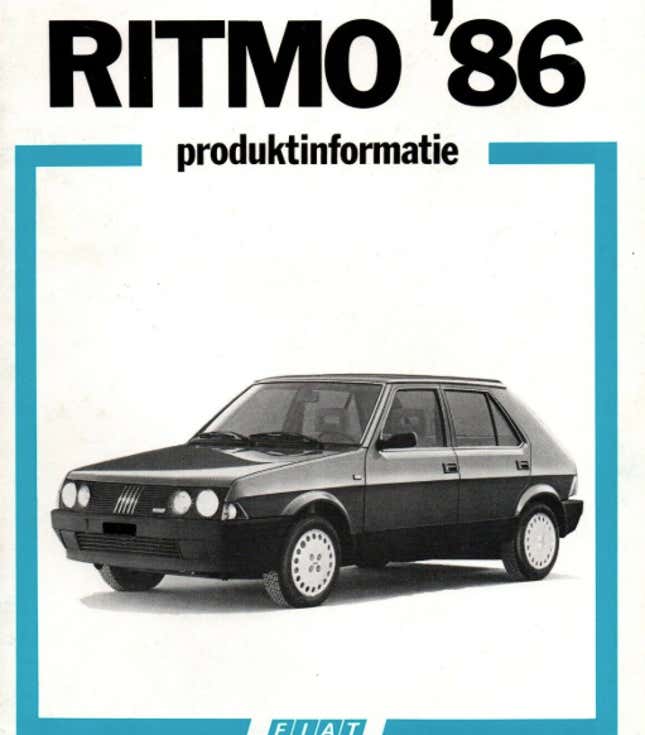
That’s what the Ritmo feels like to me, and I love it.
Later versions, sadly but predictably, succumbed to the ever-present threat of boringization, and lost a lot of the purity and daring of the original.
It was still a handsome hatchback, but that first generation design couldn’t be beat, and I think it remains a largely unappreciated design icon to this day.
We hardly ever see these in America anymore, or, really, hardly saw them back in the day. But if you do happen to encounter one, I encourage you to take a moment and walk around it, and really appreciate what was happening there, stylistically—a rare combination of boldness and restraint, daring and subtlety.
It’s a cool car.